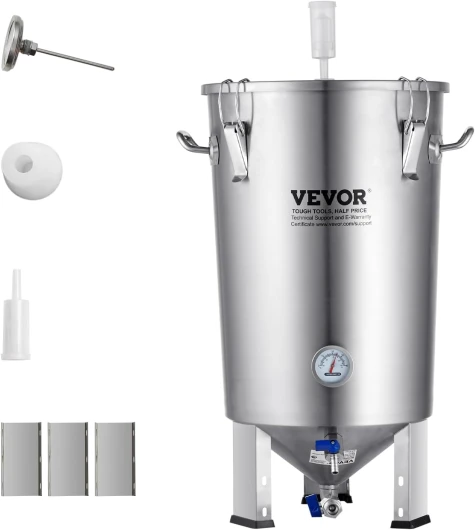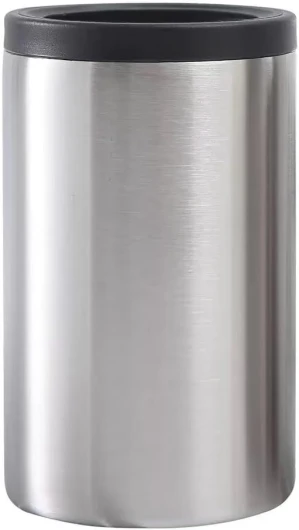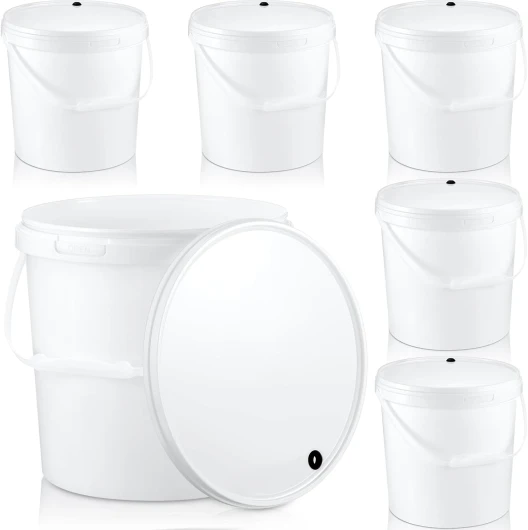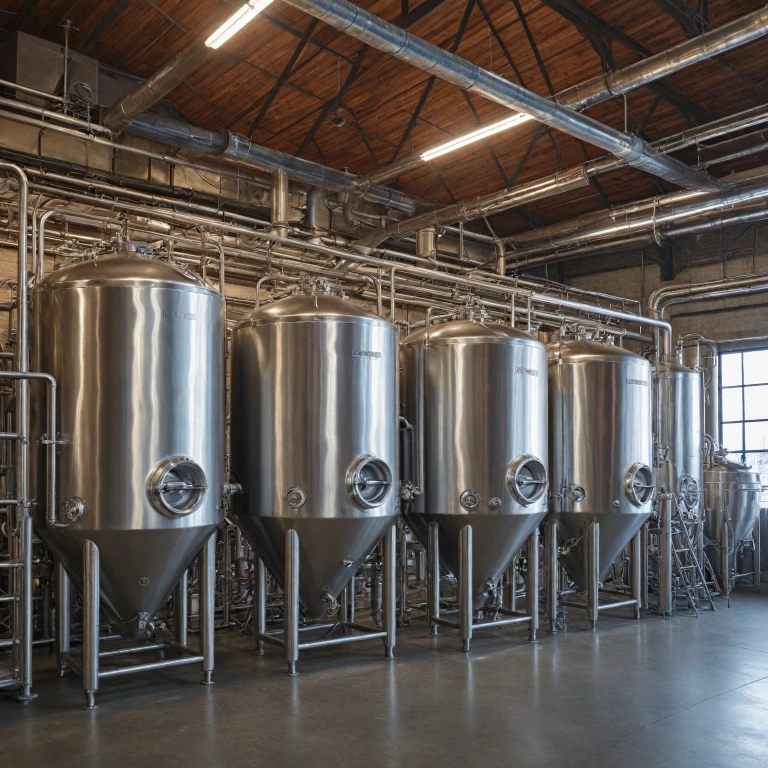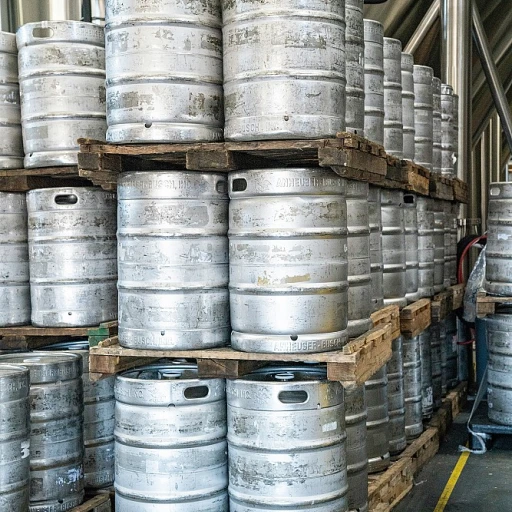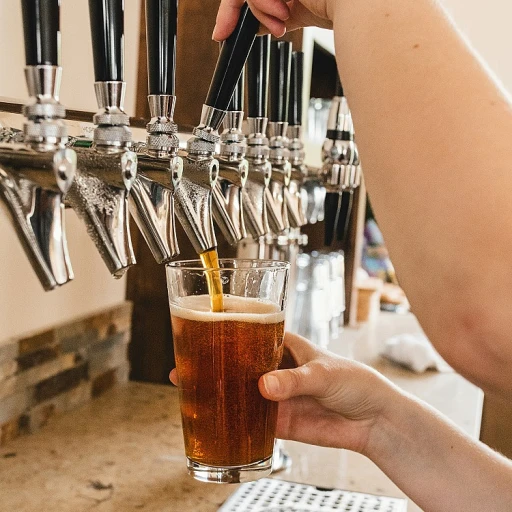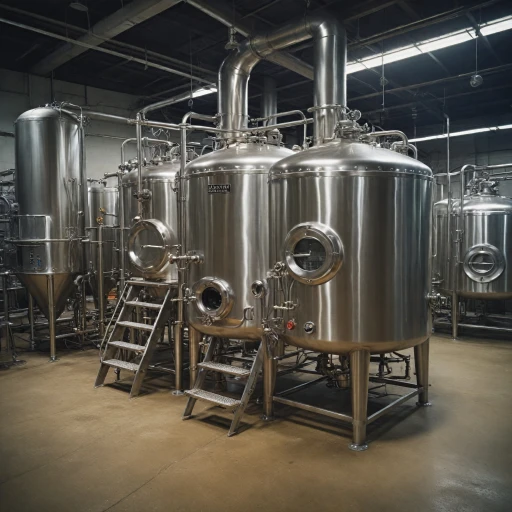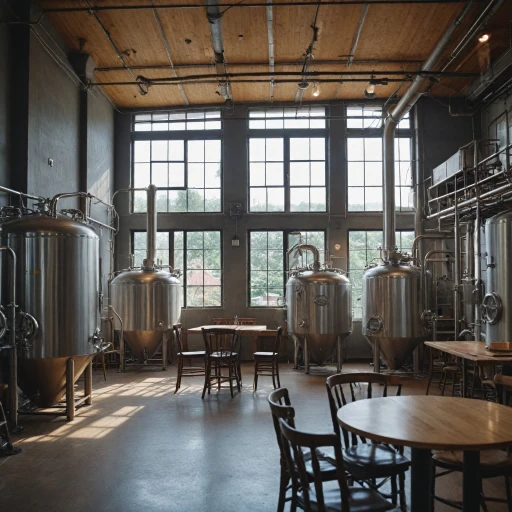
The Basics of Beer Tanks
Introduction to Beer Reservoirs
In the world of brewing, understanding the importance of beer reservoirs is crucial for both seasoned brewers and those just entering the craft. These vessels are essential components of any brewery, playing a vital role in the process of transforming grain, hops, water, and yeast into the refreshing beverage we all enjoy. Their influence stretches across the entire brewing process, from fermentation to storage, helping maintain the quality and taste of the beer.
Before diving into the specifics of materials and customization, it's key to identify what differentiates one type of tank from another. Beer tanks come in various forms, each serving a specific function. Some of the common types include fermentation vessels, often referred to as fermenters, and brite tanks, which play a distinct role in the carbonation and packaging process.
A deeper understanding of the brewing science, such as the mash tun and lauter tun, can further illuminate the critical role these reservoirs play. By grasping their function and operation, brewers can not only improve the efficiency of their brewing process but also elevate the quality of the final product.
As we explore further, each tank's material, design, and fittings significantly impact the brewing outcome—whether it's a robust stout or a crisp lager. The journey continues with a look at stainless steel's prominence and the role of fittings in customizing your brewing setup.
Materials Matter: Stainless Steel and More
Choosing the Right Material for Your Needs
When it comes to beer tanks, the material plays a significant role in the brewing process and ultimately affects the quality and taste of the beer. The most commonly used material is stainless steel, known for its durability, resistance to corrosion, and ease of cleaning. However, there are other materials to consider, depending on the specific needs of your brewery.- Stainless Steel: This is the go-to option for most brewers due to its robustness and ability to maintain a clean and sterile environment for beer fermentation and storage. Its non-reactive nature helps in preserving the beer's flavors.
- Plastic and Glass: While less common, these materials are sometimes used in smaller brewing operations. Plastic tanks can be more affordable and lighter, but they may not offer the same level of durability as stainless steel. Glass provides excellent non-reactivity but can be fragile and requires careful handling.
- Copper: Historically, copper was used due to its excellent thermal conductivity. However, its reactivity with acidic materials limits its current use and it's mostly seen in traditional breweries or for decorative purposes.
The Role of Brite Tanks in Brewing
Optimal Utilization of Brite Tanks in Brewing
Brite tanks play a pivotal role in the brewing process, often overlooked yet fundamental in defining the final beer characteristics. After fermentation, beer is usually transferred into a brite tank where it undergoes maturation, carbonation, and clarification. This critical step ensures that the beer achieves its intended flavor, clarity, and carbonation levels before packaging or serving. Brite tanks are meticulously designed to enhance the beer's quality during this post-fermentation phase. Here’s why they are indispensable:- Clarification: By allowing unwanted particles to settle, brite tanks help in clearing the beer, resulting in a visually appealing, bright final product.
- Carbonation: These tanks are specifically engineered to achieve the perfect carbonation levels, essential for mouthfeel and taste. Brewers can introduce CO2 to the beer, traditionally employing a carbonation stone for an even distribution throughout the brew.
- Temperature Precision: Brite tanks support temperature control to fine-tune the beer's maturation, impacting the flavor profile and stability.
Customizing Your Brewery with Tank Fittings
Upgrading Your Brewery with Tailored Fittings
When it comes to brewing, one size certainly does not fit all. Tailoring your beer tanks with the right fittings can have a significant impact on your brewing operations. These customizations not only enhance the functionality of your tanks but also align them perfectly with your specific brewing processes.- Valves and Pumps: Different brewing phases require distinct flow controls. Installing variable valves offers flexibility, making it easier to switch between stages smoothly.
- Manways and Access Ports: Customized manways can facilitate easier cleaning and inspection, essential for maintaining tank hygiene.
- Cooling Jackets: These are particularly useful if you're working with stainless steel tanks, helping to maintain a consistent temperature, crucial for fermentation.
- Spigots and Dispensers: Tailor these for efficient liquid transfer, minimizing wastage and maximizing efficiency.
Ordering and Maintaining Your Beer Tanks
Choosing the Right Supplier
When you're ready to order beer tanks for your brewery, selecting the right supplier is crucial. A reputable supplier can guide you through the process, ensuring you get the equipment that suits your brewing needs and budget. Look for suppliers with positive reviews and a solid track record in the industry. It's also beneficial to find a provider who offers custom solutions, allowing you to tailor your tanks to fit the unique specifications discussed in the customization section.
Prep for Installation
Proper preparation is key to a smooth installation process. Before your tanks arrive, ensure your brewery space is ready. Verify your facility can accommodate the size and weight of the tanks. Additionally, check that your plumbing and electrical systems are prepared for the integration of new brewing equipment. Planning ahead will prevent any delays in getting your tanks operational.
Establishing a Maintenance Routine
Maintaining your beer tanks is essential for the longevity and efficiency of your brewing operations. Establish a regular cleaning schedule, using the appropriate cleaning solutions compatible with the materials of your tanks. Routine inspections for wear and tear, especially at welded seams or fittings, can help detect issues before they become costly problems. Regular maintenance ensures your tanks continue to operate effectively and produce high-quality beer.
Technical Support and Warranty
Consider suppliers who offer robust technical support and a reasonable warranty for their products. Having access to professional assistance can be invaluable should you encounter any issues or need specific guidance related to your beer tanks. A good warranty also provides peace of mind, protecting your investment and ensuring you are covered in case of unforeseen defects or failures.
Adapting to New Equipment
Once your new beer tanks are up and running, give your team ample time to acclimate to the new systems. Provide thorough training on the operation and maintenance procedures specific to your tanks. This will not only enhance efficiency but also foster a safer brewing environment.

